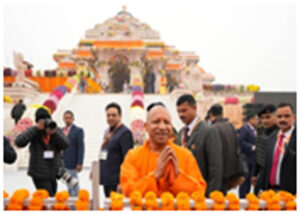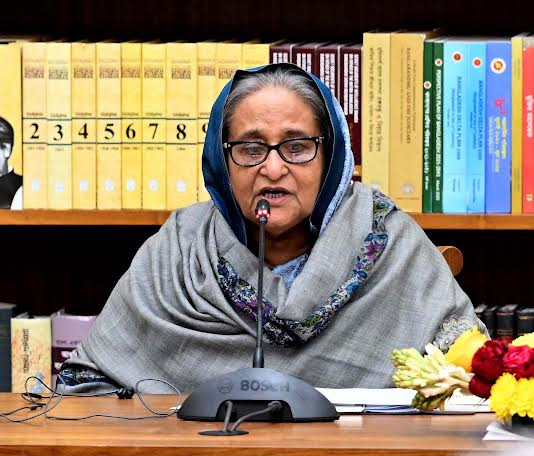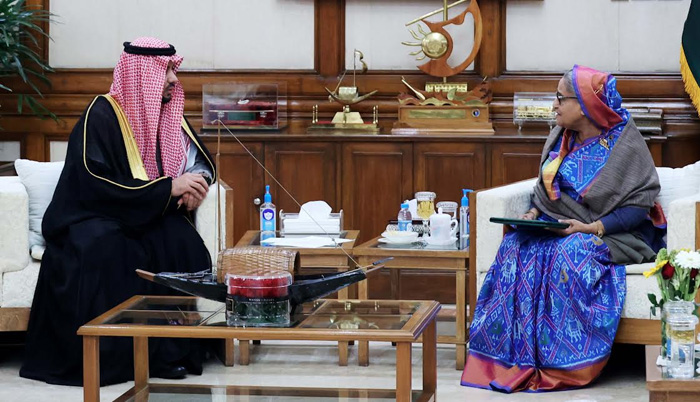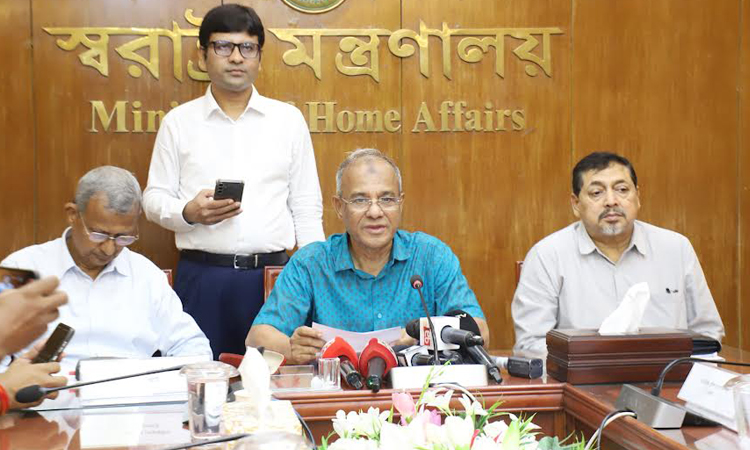 Moon Desk: Indian Prime Minister Narendra Modi has opened a controversial Hindu temple, delivering on a crucial Hindu nationalist pledge that he hopes will catapult the governing Bharatiya Janata Party (BJP) to a record third successive term in upcoming general elections.
Moon Desk: Indian Prime Minister Narendra Modi has opened a controversial Hindu temple, delivering on a crucial Hindu nationalist pledge that he hopes will catapult the governing Bharatiya Janata Party (BJP) to a record third successive term in upcoming general elections.
Modi, dressed in a traditional kurta tunic, led the opening ceremony on Monday as Hindu priests chanted hymns inside the temple’s inner sanctum, where a 1.3-metre (4.3-foot) stone sculpture of Lord Ram was installed last week.
A conch was blown by a priest to mark the temple’s opening and Modi placed a lotus flower in front of the black stone idol, decked in intricate gold ornaments and holding a golden bow and arrow. He later prostrated before the idol. The temple, which is still under construction atop the ruins of a historic mosque in the northern city of Ayodhya, is dedicated to Hinduism’s Lord Ram. Its consecration fulfils a longstanding demand by millions of Hindus who worship the revered deity.
The BJP and other Hindu nationalist groups have portrayed the temple as central to their vision of reclaiming Hindu pride, which they say has been overshadowed by centuries of Mughal rule and British colonialism. Millions of Indians watched the ceremony on television, with news channels running non-stop coverage of the event, portrayed as a religious spectacle.
Nearly 7,500 people, including elite industrialists, politicians and movie stars, witnessed the ritual on a giant screen outside the temple as a military helicopter showered flower petals. Analysts and critics see the ceremony as the start of the election campaign for Modi, an avowed Hindu nationalist and one of India’s most consequential leaders who has sought to transform the country from a secular democracy into a distinctly Hindu state in his nearly 10 years in power.
They say the pomp-filled display led by the government shows the extent to which the line between religion and state has eroded under Modi. Built at an estimated cost of $217m and spread over nearly 3 hectares (7.4 acres), the temple lies atop the debris of the 16th-century Babri mosque, which was razed to the ground in 1992 by Hindu mobs, who believed it was built on temple ruins marking the birthplace of Lord Ram.
The site has long been a religious flashpoint for the two communities, with the demolition of the mosque triggering bloody riots across India that killed 2,000 people, mostly Muslims. The dispute ended in 2019 when, in a controversial decision, India’s Supreme Court called the mosque’s destruction “an egregious violation” of the law but granted the site to Hindus while giving Muslims a different plot of land.







